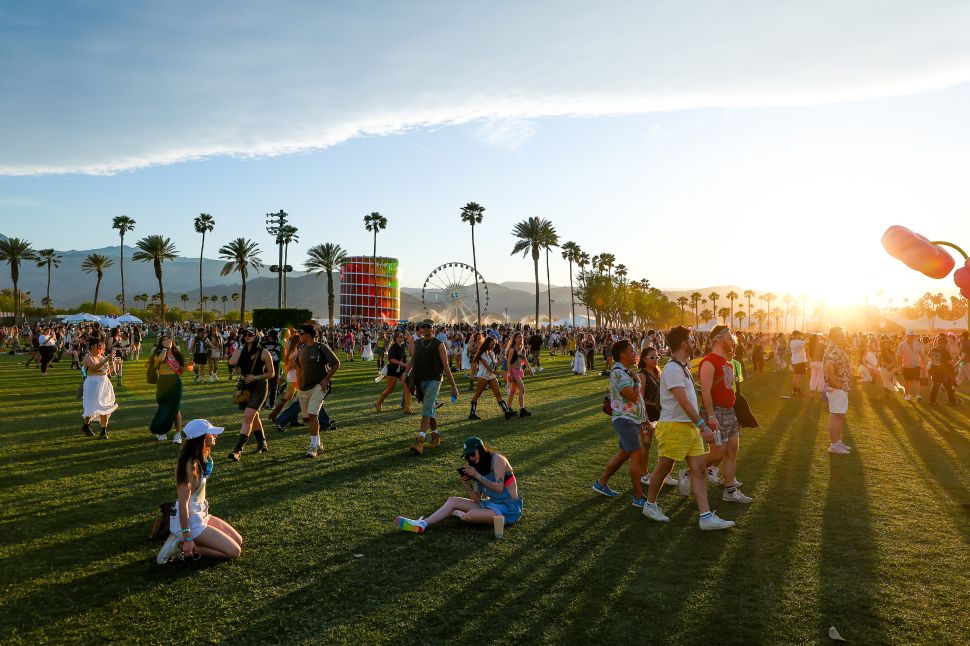The Coachella Valley Music and Arts Festival, known for its big-name headliners, bohemian attire and celebrity sightings, has long been one of the most sought-after musical events in the U.S. But attending the Indio, Calif.-based event also comes with a hefty price tag—one that starts at $599 for a three-day pass. This year, more than half of Coachella’s 160,000 to 200,000 attendees alleviated some of that sticker shock by opting for a payment plan option, according to Billboard.
Payment plans are nothing new for Coachella, or other festivals like Lollapalooza and Rolling Loud. Coachella began offering the option in 2009, with around 18 percent of attendees selecting it back then. In the subsequent years, however, “buy now, pay later” (BNPL) plans have become increasingly ubiquitous. Nowadays, about 60 percent of Coachella attendees choose such payment options.
Coachella did not respond to requests for comment.
The festival’s payment plan isn’t quite the same as those offered by well-known BNPL providers like Klarna and Affirm (AFRM), which sometimes charge interest to those who fail to make payments on time. The festival’s system, which requires an additional $41 flat fee to use, cancels orders if scheduled payments are missed and issues credits that can be used for next year’s edition, reported Billboard.
But experts say this type of plan still isn’t risk-free. “The issue is that more flexibility also gives more opportunities to overspend,” Wesley Yin, a professor economics at the University of California, Los Angeles, told Observer. “It really requires a lot of personal awareness of finances and spending, and that’s now always easy for the typical consumer,” he added.
BNPL plans are dangerously popular
Unlike traditional credit card companies, BNPL providers don’t always require credit checks and are therefore more accessible for consumers who might already be in financially vulnerable situations. Those who opt for BNPL plans display disproportionately low credit scores, according to a 2023 survey from the Federal Reserve Bank of New York that described BNPL users as more “financially fragile” overall.
That hasn’t stopped the BNPL industry from ballooning in recent years. Nearly $34 billion worth of loans originated from the industry in 2022, according to the Consumer Financial Protection Bureau—a rise from $24 billion in 2021 and an even sharper jump from around $2 billion in 2019.
Creeping across various sectors of the consumer industry, these plans can now be applied to purchases as seemingly mundane as ordering a burrito. Klarna, for example, last month partnered with food delivery service Doordash (DASH) and is also used by companies like Walmart (WMT) and Instacart (CART).
“It’s never been easier for consumers to go into debt for discretionary consumer purchases,” Sean Pyles, the host of NerdWallet’s Smart Money podcast, told Observer.
When it comes to utilizing payment systems for purchases surrounding an event like a music festival, Pyles worries that these plans will lead to a “stacking” of loans. Between accommodation, food and even festival outfits, the total cost of attending Coachella adds up to far more than the price of a ticket. “It can be difficult to track multiple loans at once, especially if you have them with different providers,” said Pyles, who is also a certified financial planner.
While BNPL plans aren’t an inherently bad financial choice, relying on them for short-term purchases that add up are when risks start to emerge, said Pyles, who pointed to a “broader trend” of consumers relying on new financial products to “just enjoy the moment, go out and have fun—and maybe not be thinking long-term about what this might mean for their finances down the road.”

